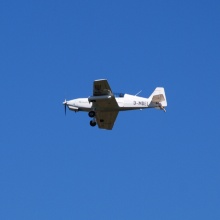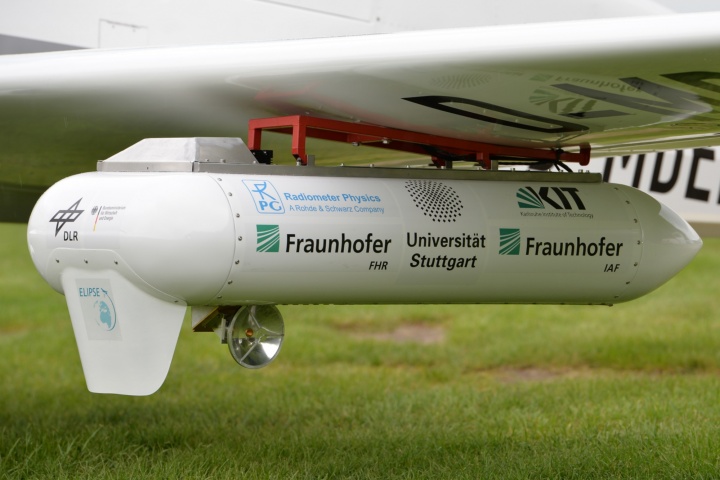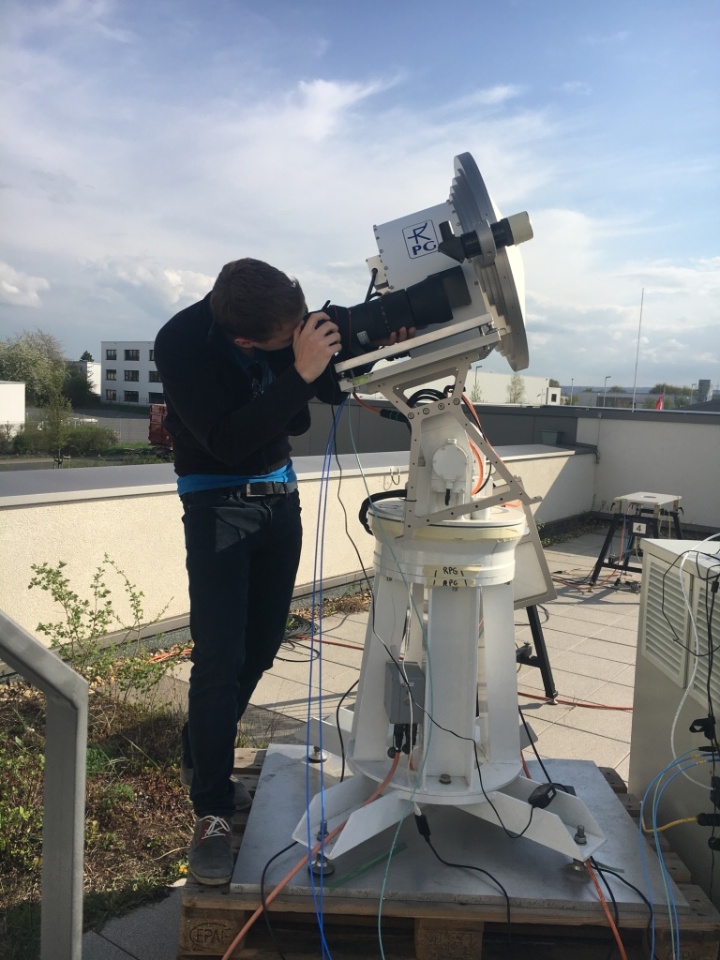Fast Internet on the plane – a dream for airline companies, business travellers and holidaymakers alike. So far, it failed due to the insufficient performance of the data connection between plane and ground. A research team led by the University of Stuttgart now brings the realization in reach: They established a data transmission between a plane and a ground terminal with a data rate of 8 Gigabit per second.
To reach such a high data rate, the researchers of the University of Stuttgart, the Karlsruhe Institute of Technology (KIT), the company Radiometer Physics GmbH, the Fraunhofer Institute for Solid State Physics IAF and the Fraunhofer Institute for High Frequency Physics and Radar Techniques FHR used for the first time the radio frequency range from 71 to 76 Giga-Hertz for their air-to-ground wireless communication. In this frequency range high bandwidths are available to achieve multi-Gigabit data rates.
With this technology future broadband internet and video-on-demand may be provided in passenger aircraft. Also, high resolution video and sensor data from an aircraft, an earth observation satellite or a drone can be continuously transmitted to the ground. The achieved data rate allows, for instance, the simultaneous transmission of up to 600 different “4k” video streams (ca. 16 Mbit/s). Global-coverage satellite networks, seamlessly integrated into terrestrial fibre-wire and wireless networks via this new technology, can provide globally available broadband internet and ensure the data-hungry services of the internet of things.
Likewise, the continuously increasing amount of data stored on planes can be read out extremely quickly from the on-board memory while the plane is still in the air or approaching the terminal. So far, this needs to be done by a time-consuming wired connection while the plane is standing on the rollway, which makes the innovation particularly interesting for airline companies.
The experiment succeeded in the frame of the R&D project ELIPSE funded by the German Research Foundation and the Federal Ministry for Economic Affairs and Energy. The plane was carrying a high performance transmitter in the so-called E-band and encircled the receiving ground terminal in a height of 1.000 metres above ground and a radius between five to twelve kilometres. Custom developed antenna tracking on the ground ensured that the strongly focused antenna beams of the transmitter and receiver remained aligned.
The broadband connection remained stable during a complete flyover in a radius of five kilometres for three minutes. At a data rate of 8 Gigabit per second this amounts to 180 Giga-Byte of data. Adverse weather conditions such as clouds, rain and fog cut back the connection quality in this frequency range, but do not completely shut it down, so that the connection can be maintained also during poor weather using modern communication techniques.
Expert Contact:
Prof. Ingmar Kallfass, Universität Stuttgart, Institut für Robuste Leistungshalbleitersysteme (ILH), Tel.: 0711/ 685-68747, E-Mail




